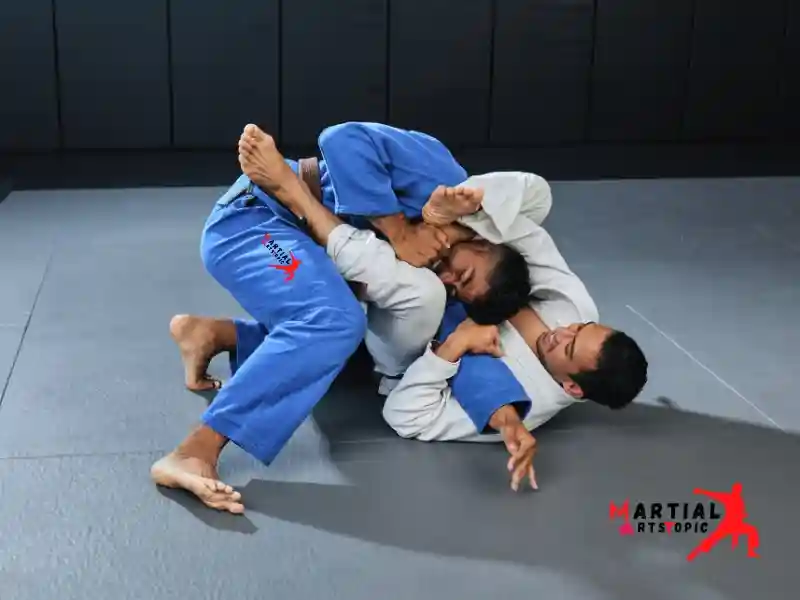
Unveiling the Diverse World of Grappling Martial Art
Unveiling the Diverse World of Grappling Martial Arts, often referred to as groundwork or clinch fighting, encompass a wide range of disciplines that focus on controlling an opponent through techniques such as throws, locks, and pins. This dynamic and intricate combat style has a long and fascinating history, with roots that can be traced back to ancient civilizations.
Fundamentals of Grappling Martial Arts
Grappling martial arts emphasize close combat and the use of leverage and technique to overcome opponents. Techniques commonly utilized in grappling include joint locks, chokes, and holds, all of which require a deep understanding of body mechanics and positioning. In addition, practitioners of grappling martial arts must develop strength, flexibility, and agility to execute these techniques effectively.
History of Grappling Martial Arts
The history of grappling martial arts is a rich and storied one, with origins that date back centuries. This ancient form of combat has developed and developed over time, with techniques that have been refined and passed down through generations. In this blog post, we will explore the origins of grappling martial arts and the evolution of its techniques, shedding light on the fascinating journey of this timeless discipline.
Origins of Grappling Martial Arts
Grappling martial arts have their roots in ancient civilizations, where hand-to-hand combat was an essential skill for survival and warfare. In various cultures around the world, grappling techniques were developed and refined as a means of self-defense and combat. From the wrestling traditions of ancient Greece to the Jujutsu of Japan, grappling martial arts have been a fundamental aspect of human history.
Evolution of Grappling Martial Arts Techniques
Grappling Martial arts techniques have developed and been refined, leading to the development of various grappling martial arts styles such as Judo, Brazilian Jiu-Jitsu, and wrestling.
Judo, which originated in Japan, emphasizes the use of throws and groundwork to subdue opponents. It was founded by Jigoro Kano in the late 19th century and has since become a popular sport and self-defense system worldwide.
Brazilian Jiu-Jitsu, a derivative of Judo, focuses on ground fighting and submission techniques. It has gained widespread popularity because of its effectiveness in mixed martial arts competitions and self-defense scenarios.
Wrestling, with its roots in ancient cultures, has developed into various styles such as Greco-Roman wrestling and freestyle wrestling. The because of these styles emphasize takedowns, throws, and controlling opponents on the ground.
Types of Grappling Martial Arts
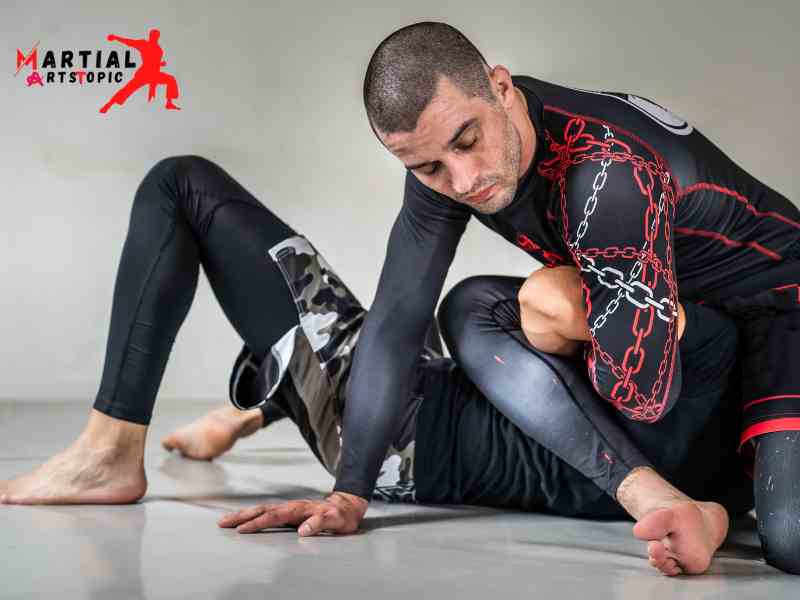
Types of Grappling Martial Arts: The Diverse World of Grappling Martial Arts in the realm of martial arts, the art of grappling holds a prominent place, with an array of disciplines that showcase the diversity and effectiveness of these combat styles. From traditional forms deeply rooted in cultural heritage to globally recognized martial arts, the world of grappling martial arts offers a rich tapestry of techniques, traditions, and philosophies. Let’s delve into the fascinating world of grappling martial arts and explore the unique characteristics of each discipline.
Bokh: A Traditional Mongolian Art of Wrestling
Originating from Mongolia, Bokh is a traditional form of wrestling that embodies agility, strength, and technique. This ancient martial art is deeply entrenched in Mongolian culture and is often showcased during the annual Naadam festival, reflecting the enduring legacy of Mongolian martial arts.
Brazilian Jiu-Jitsu: The Global Phenomenon of Ground Fighting
Brazilian Jiu-Jitsu has garnered global acclaim for its effectiveness in ground fighting and submission holds. This grappling martial art empowers practitioners to overcome larger opponents using leverage and technique, making it a valuable skill for self-defense and competitive combat sports.
Catch Wrestling: The Dynamic Style from England
Hailing from England, its emphasis characterizes Catch Wrestling on submissions and joint locks. The dynamic nature of this martial art has developed into a formidable discipline that encompasses both standing and ground techniques.
Danzan Ryu: A Holistic Approach to Martial Arts
Developed in Hawaii, Danzan Ryu offers a comprehensive martial art system that includes both striking and grappling techniques. With a focus on practical self-defense and personal development, Danzan Ryu provides a holistic approach to martial arts training.
Judo: The Japanese Art of Balance and Leverage
Founded in Japan, Judo places a strong emphasis on throwing and takedown techniques, utilizing balance, leverage, and timing as core principles. This martial art is not only a competitive sport but also a valuable form of self-defense, suitable for individuals of all ages and body types.
Jujutsu: Rooted in Japanese Tradition
With its strategic approach to combat, Jujutsu emphasizes redirecting and manipulating an attacker’s force through joint locks, holds, and throws. Deeply rooted in Japanese tradition, Jujutsu has become a cornerstone of martial arts training worldwide.
Luta Livre: The Dynamic Brazilian Art
Translating to “Free Fighting” in Portuguese, Luta Livre encompasses a diverse range of grappling techniques, showcasing the fluid and dynamic nature of this Brazilian martial art.
Sambo: The Russian Martial Art of Two Facets
Originating in Russia, Sambo encompasses both Combat Sambo and Sports Sambo, showcasing its relevance in practical self-defense and competitive grappling contexts.
Schwingen: Switzerland’s Traditional Wrestling Art
Deeply rooted in Swiss culture, Schwingen embodies the values of resilience, determination, and camaraderie, showcasing the cultural significance and physical prowess of this traditional martial art.
Shuai Jiao: Ancient Chinese Wrestling
With a rich history in Chinese combat traditions, Shuai Jiao emphasizes balance, agility, and leverage, setting itself apart as a formidable martial art with timeless relevance in combat.
Ssireum: Originating in Korea
Originating in Korea, Ssireum emphasizes strength, technique, and strategy, reflecting the enduring legacy of martial arts in Korean society and its captivating display of physical skill and mental agility.
Sumo: Originating in Japan
Rooted in the intense physicality of wrestling and the ceremonial aspects of competition, Sumo embodies the intersection of sport and spirituality, creating a captivating and revered martial art with deep-rooted traditions and rituals.
Wrestling: A Global Phenomenon
With a rich history that spans cultures and civilizations, wrestling has developed into a global phenomenon, encompassing diverse styles and disciplines, and showcasing the skills of athletes on the world stage.
Types of Grappling Techniques
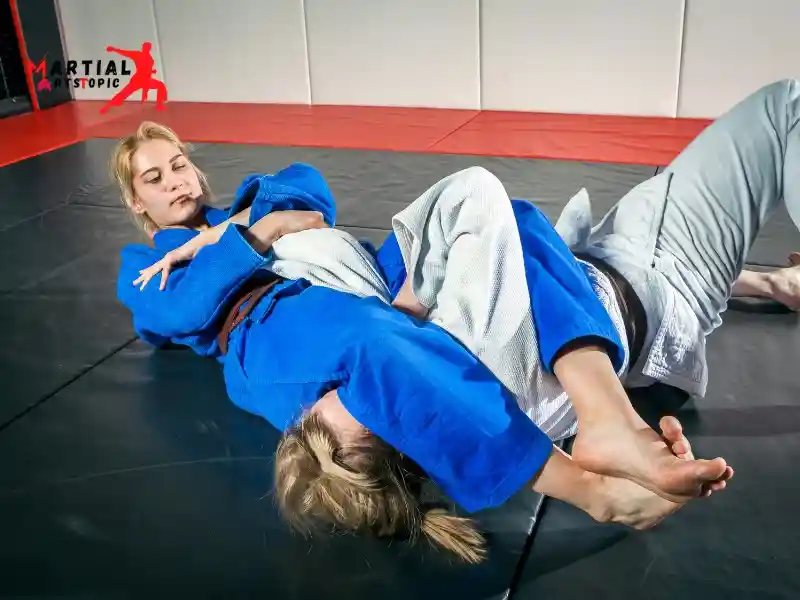
Types of Grappling martial arts Techniques: The Art of Grappling: Different Grappling Techniques in Martial Arts grappling martial arts encompass a wide range of techniques and skills that are essential for close combat situations. Whether you are a seasoned martial artist or just starting your journey, understanding the different types of grappling techniques can help elevate your skills and proficiency in various martial arts disciplines. The various types of grappling techniques, including stand-up grappling, ground grappling, and transitional grappling techniques, to help you become a well-rounded martial artist.
Stand-Up Grappling Techniques
Stand-up grappling techniques are an essential aspect of martial arts, allowing practitioners to gain control and advantage over their opponents while standing. These techniques encompass a wide range of moves, including throws, takedowns, and clinch work, all of which require precise timing, balance, and leverage. By mastering stand-up grappling, martial artists can effectively dictate the course of a fight, whether in self-defense or competition. Understanding the principles behind these techniques and honing the associated skills can greatly enhance one’s overall martial arts proficiency and strategic prowess.
Clinch Fighting
Clinch fighting is a fundamental stand-up grappling technique that involves close-range combat, where practitioners aim to gain control over their opponent’s body. By utilizing clinch fighting techniques, martial artists can effectively maneuver and control their opponent’s movements, setting the stage for powerful strikes or takedowns.
Throws and Takedowns
Throws and takedowns are essential stand-up grappling techniques that focus on off-balancing and taking down an opponent to the ground. These techniques require precise timing, leverage, and body positioning to execute effectively, making them valuable assets for martial artists in various combat scenarios.
Sweeps and Trips
Sweeps and trips are strategic stand-up grappling techniques used to disrupt an opponent’s balance and stability, creating opportunities to take control of the fight. These techniques emphasize the use of footwork and leverage to unbalance the opponent, setting the stage for follow-up attacks or positional dominance.
Ground Grappling Techniques
Ground grappling techniques are an essential aspect of martial arts, especially in disciplines like Brazilian Jiu-Jitsu and MMA. When the fight goes to the ground, having a solid foundation in ground grappling can make all the difference. These techniques encompass a wide range of moves and positions, including sweeps, submissions, and escapes. Developing proficiency in ground grappling requires patience, dedication, and a willingness to learn from both successes and failures. By mastering these techniques, martial artists can gain confidence in their ability to defend themselves in close-quarters combat situations, making it a crucial skill to have in their arsenal.
Joint Locks
Ground grappling techniques, such as joint locks, are focused on manipulating an opponent’s joints, typically targeting the elbows, shoulders, and knees. By applying leverage and pressure, martial artists can effectively immobilize or submit their opponents, showcasing the technical precision and control required in ground grappling.
Chokes and Strangles
Chokes and strangles are submission techniques that aim to restrict an opponent’s air supply or blood flow, leading to a potential submission or loss of consciousness. These techniques require precise positioning and application to ensure maximum effectiveness while emphasizing the importance of control and timing in ground grappling scenarios.
Pins and Control Positions
Pins and control positions play a crucial role in ground grappling, as they allow martial artists to establish dominance and control over their opponents on the ground. By utilizing effective pinning techniques and control positions, practitioners can limit their opponent’s movement and create opportunities for subsequent attacks or submissions.
Transitional Grappling Techniques
Transitional grappling techniques are essential for any martial artist looking to improve their ground game. These techniques focus on smoothly transitioning between different positions and submissions, allowing practitioners to maintain control and apply effective submissions. By mastering transitional grappling, martial artists can seamlessly move from one position to another, creating opportunities to capitalize on an opponent’s weaknesses. Whether you’re training in Brazilian Jiu-Jitsu, wrestling, or mixed martial arts, understanding and implementing transitional grappling techniques can elevate your overall skill set and enhance your ability to dominate on the ground.
Submissions from Transitions
Transitional grappling techniques revolve around capitalizing on positional changes to execute submissions or control the flow of the fight. These techniques require adaptability and awareness to seamlessly transition between different grappling scenarios, showcasing the versatility and fluidity of transitional grappling in martial arts.
Escapes and Reversals
Escapes and reversals are essential transitional grappling techniques designed to help practitioners break free from unfavorable positions or turn the tide of a grappling exchange. By mastering these techniques, martial artists can effectively navigate through challenging situations and regain control of the fight.
Ground-and-Pound Techniques
Ground-and-pound techniques focus on delivering strikes and maintaining pressure from top position on the ground. These techniques combine striking with grappling, showcasing the integration of different martial arts disciplines to create a well-rounded approach to ground fighting.
Basic Grappling Moves and Techniques
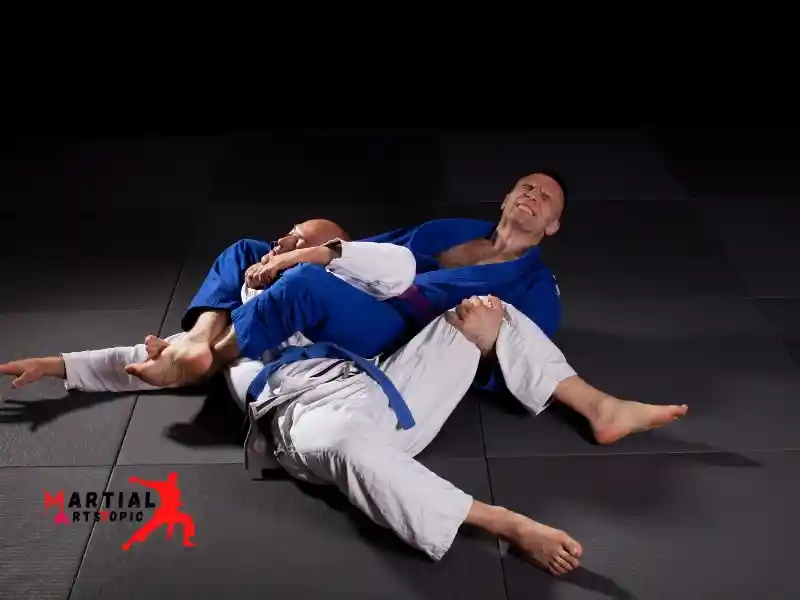
Grappling Martial Arts: Mastering the Basics of Grappling Moves and Techniques in mastering the art of grappling, it’s essential to have a firm foundation in the basic grappling moves and techniques. Whether you’re a seasoned martial artist or just starting out, understanding the fundamental takedowns, ground control, and submission holds is crucial for success in grappling martial arts.
Breakdown of Essential Takedowns and Throws
Mastering takedowns and throws is a fundamental aspect of grappling martial arts. These techniques are used to take an opponent down to the ground and gain a dominant position. Some essential takedowns and throws include the hip throw, shoulder throw, and single-leg takedown. These techniques require precision, timing, and leverage to effectively control and manipulate your opponent’s movements.
Fundamentals of Ground Control and Positional Dominance
Once the fight goes to the ground, ground control and positional dominance become crucial in grappling martial arts. Understanding how to transition between positions, maintain control, and apply pressure is essential for dominating your opponent. Techniques such as the mount position, side control, and back control are vital for establishing dominance and setting up submission opportunities.
Introduction to Common Submission Holds and Locks
Submission holds and locks are the bread and butter of grappling martial arts. These techniques are used to immobilize and submit an opponent through joint locks or chokes. Common submission holds include the armbar, rear naked choke, and triangle choke. Mastering these techniques requires precise positioning, leverage, and timing to effectively apply pressure and force your opponent to submit.
The Art of Grappling Martial Arts: Essential Training Tips
Grappling is a complex and dynamic discipline that requires a combination of strength, technique, and mental fortitude. Whether you’re a beginner or a seasoned grappler, there are always ways to improve your skills and take your training to the next level. In this article, we’ll explore some essential grappling training tips to help you become a more proficient and effective grappler.
- Focus on Fundamentals: The foundation of any successful grappling practice is mastering the fundamentals. Take the time to work on basic techniques such as posture, base, and movement. These fundamental skills will form the building blocks for more advanced techniques and strategies.
- Develop Strength and Conditioning: Grappling requires a high level of physical fitness, including strength, endurance, and flexibility. Incorporate strength training, cardio, and mobility exercises into your routine to improve your overall physical capabilities.
- Drill, Drill, Drill: Repetition is key in grappling. Regularly drilling techniques and movements will help to build muscle memory and improve your reflexes. Set aside time in each training session for focused drilling to refine your skills.
- Spar with Purpose: Sparring is an essential part of grappling training, but it’s important to spar with a specific goal in mind. Whether it’s working on a particular technique or testing your defensive skills, approach sparring with intention and focus.
- Study Techniques and Strategies: Take the time to study and analyze different grappling techniques and strategies. Watch videos, read books, and seek out instruction from experienced grapplers to expand your knowledge and understanding of the art.
- Work on Your Mental Game: Grappling is as much a mental challenge as it is physical. Develop mental toughness, focus, and resilience to stay composed and strategic during training and competition.
- Cross-Train in Other Disciplines: Cross-training in other martial arts disciplines, such as judo, wrestling, or Brazilian jiu-jitsu, can provide valuable insights and techniques that can enhance your grappling skills.
- Seek Quality Coaching: A knowledgeable coach can provide invaluable guidance and feedback to help you improve and refine your grappling abilities. Look for a reputable coach or training facility to support your development.
- Recovery and Rest: Don’t overlook the importance of rest and recovery in your training regimen. Adequate rest and recovery time are essential for preventing injuries and allowing your body to adapt and grow stronger.
- Stay Consistent and Patient: Mastery in grappling, like any discipline, takes time and dedication. Stay consistent in your training and be patient with your progress. Improvement will come with persistent effort and commitment.
Benefits of Grappling Martial Arts

Grappling martial arts, also known as submission wrestling, is a discipline that focuses on controlling and dominating an opponent through techniques such as clinch fighting, takedowns, and ground grappling. This exciting and challenging martial art form has gained popularity not only in the realm of competitive sports but also as a unique and effective way to improve physical fitness and mental strength.
- Full-Body Workout: Engaging in grappling martial arts provides a comprehensive full-body workout. The dynamic movements and techniques involved in grappling require strength, endurance, flexibility, and agility, resulting in a well-rounded physical fitness regimen.
- Improved Physical Conditioning: Grappling training sessions are designed to enhance cardiovascular endurance, muscular strength, and overall physical conditioning. By consistently participating in grappling martial arts, practitioners can expect to see improvements in their physical performance and stamina.
- Self-Defense Skills: Grappling martial arts equip practitioners with invaluable self-defense skills that can be applied in real-life situations. Learning how to control and neutralize an opponent through grappling techniques can instill a sense of confidence and empowerment, making it a practical form of self-defense.
- Mental Toughness: The mental aspect of grappling martial arts is equally significant. Practitioners develop mental resilience, focus, and determination as they navigate the challenges of training and competition. This mental fortitude can extend beyond the mat and positively impact various aspects of life.
- Stress Relief: Engaging in grappling martial arts offers a healthy outlet for stress relief. The physical exertion and mental focus required during training can help alleviate stress and tension, promoting a sense of overall well-being.
- Discipline and Respect: Grappling martial arts emphasize discipline, respect, and humility. Practitioners are encouraged to conduct themselves with integrity and fair play, fostering a positive and respectful training environment.
- Community and Camaraderie: Grappling martial arts provide an opportunity to connect with a diverse and supportive community of fellow practitioners. The sense of camaraderie and shared passion for the sport can enhance the overall training experience and create lasting friendships.
Grappling for Self-Defense
Grappling for Self-Defense: The Art of Grappling Martial Arts for Effective Self-Defense Situations” When it comes to self-defense, having a comprehensive understanding of grappling martial arts can be a significant change. In this blog, we’ll explore the practical applications of grappling in self-defense scenarios, key principles for self-defense grappling, and the legal and ethical considerations that come with it.
Practical Applications of Grappling in Self-Defense Scenarios
Grappling martial arts, such as Brazilian Jiu-Jitsu, Judo, and wrestling, offer a range of techniques and strategies that can be incredibly effective in real-life self-defense situations. From controlling an aggressor to neutralizing threats and gaining a dominant position, grappling provides practical solutions for self-defense.
Key Principles for Self-Defense Grappling
Effective self-defense grappling relies on key principles that prioritize safety and efficiency. Understanding the importance of leverage, body positioning, and timing can make all the difference in a confrontational situation. By mastering these principles, individuals can effectively defend themselves while minimizing the risk of injury.
Legal and Ethical Considerations
While grappling can be a highly effective form of self-defense, it’s crucial to consider the legal and ethical implications of its application. Understanding the legal boundaries of self-defense, the appropriate use of force, and the concept of proportional response is essential for anyone practicing grappling martial arts for self-defense.
Safety and Injury Prevention in Grappling
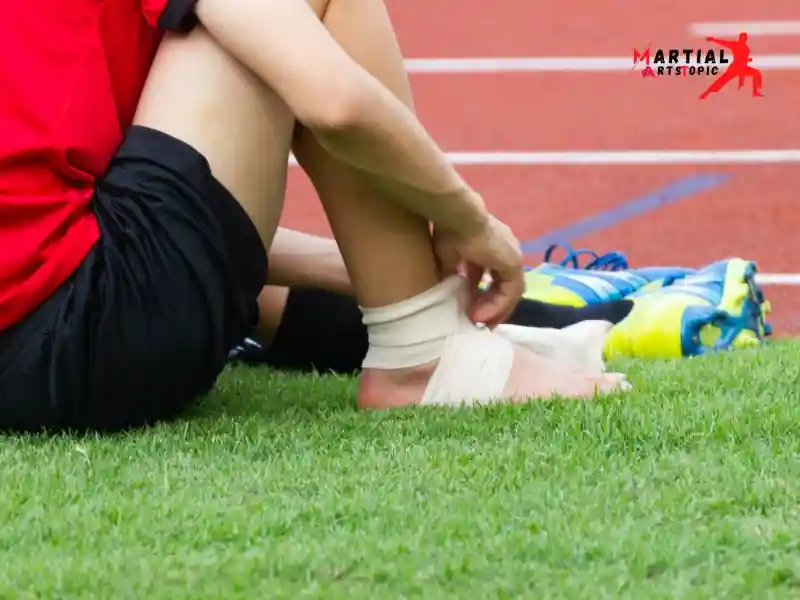
Safety and Injury Prevention in Grappling martial arts are an exciting and challenging form of combat sport, but they also come with potential risks of injury. Whether you’re a seasoned practitioner or a beginner, it’s crucial to prioritize safety and injury prevention in grappling to ensure a positive and rewarding experience. In this blog post, we’ll explore the importance of safety measures and provide valuable tips for minimizing the risk of injuries in grappling martial arts.
The Nature of Grappling Martial Arts
Grappling martial arts, which include disciplines such as Brazilian Jiu-Jitsu, Judo, and wrestling, involve close-contact combat and the use of various techniques to control and subdue an opponent. The physical nature of these martial arts makes them both physically demanding and potentially hazardous if proper precautions are not taken.
Importance of Safety in Grappling
Safety should always be a top priority in any form of martial arts, and grappling is no exception. Besides the risk of acute injuries such as joint sprains, fractures, and concussions, grapplers are also susceptible to overuse injuries because of the repetitive nature of training and competition. By implementing effective safety measures, practitioners can minimize the likelihood of sustaining injuries and enjoy their training for years to come.
Tips for Injury Prevention in Grappling Martial Art
- Warm-Up and Stretching: Before engaging in any grappling activities, it’s essential to warm up the body and perform dynamic stretching exercises to prepare the muscles and joints for the physical demands of training.
- Technique Over Strength: Emphasize the importance of proper technique over sheer strength. Using correct form and execution of techniques can reduce the risk of overexertion and prevent unnecessary strain on the body.
- Protective Gear: Utilize appropriate protective gear such as mouth guards, headgear, and joint supports to minimize the risk of affected-related injuries during training and competition.
- Controlled Sparring: Engage in controlled sparring sessions with training partners who prioritize safety and respect for each other’s well-being. This helps reduce the likelihood of accidental injuries during practice.
- Listen to Your Body: Pay attention to any signs of discomfort or pain during training. Ignoring minor discomfort can lead to more severe injuries, so it’s crucial to listen to your body and address any issues promptly.
- Cross-Train and Rest: Incorporate cross-training and rest days into your routine to prevent overuse injuries and maintain overall physical fitness and resilience.
- Seek Professional Coaching: Work with experienced coaches who prioritize safety and provide guidance on proper technique and injury prevention strategies.
Conclusion
Grappling martial arts are a diverse and effective set of techniques that emphasize the close combat and control of an opponent. Whether practiced for self-defense, sport, or fitness, grappling martial arts offers valuable skills for individuals of all ages and abilities. With a focus on leverage, technique, and strategy, practitioners can develop physical strength, mental discipline, and a deeper understanding of body mechanics. As a result, grappling martial arts continue to be a popular and respected discipline with a rich history and ongoing relevance in the modern world.
